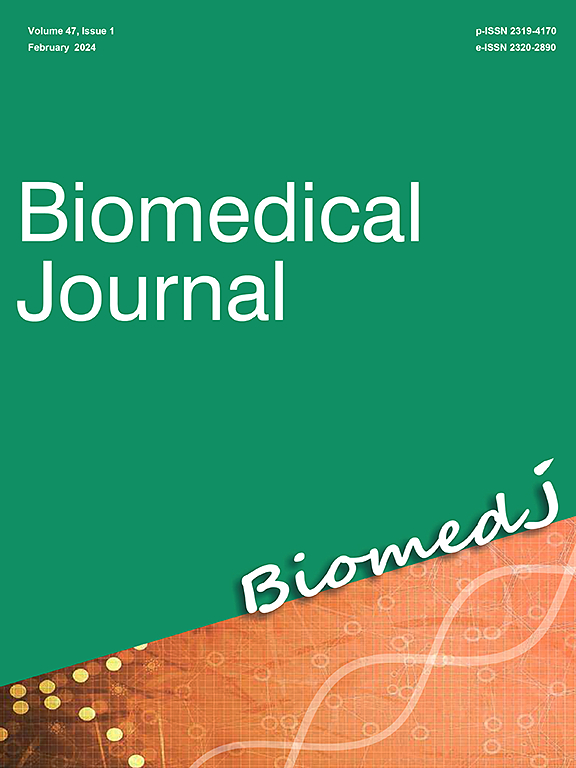黄芪多糖对T细胞和巨噬细胞抑制前列腺癌的作用和机制
IF 4.1
3区 医学
Q2 BIOCHEMISTRY & MOLECULAR BIOLOGY
引用次数: 0
摘要
背景:黄芪多糖(APS)对前列腺癌的影响及其内在机制,尤其是其在免疫调节中的作用,仍未得到充分阐明:本研究采用 XTT 法评估前列腺癌细胞和巨噬细胞的增殖情况。T细胞增殖采用羧基荧光素二乙酸琥珀酰亚胺酯标记法进行测定。通过流式细胞术、Western 印迹分析、酶联免疫吸附试验、定量 PCR 和细胞因子膜阵列,仔细研究了 APS 对 T 细胞和巨噬细胞的影响。通过 PD-L1/PD-1 均匀试验研究了 APS 对 PD-L1 和 PD-1 之间相互作用的影响。此外,还通过迁移试验探讨了 T 细胞和巨噬细胞的条件培养基对 PC-3 细胞迁移的影响:结果:观察发现,浓度为 1 毫克/毫升和 5 毫克/毫升的 APS 可增强 CD8+ T 细胞的增殖。浓度为 5 毫克/毫升时,APS 可激活 CD4+ 和 CD8+ T 细胞,减轻受γ干扰素(IFN-γ)或奥沙利铂刺激的前列腺癌细胞中 PD-L1 的表达,并适度减少 PD-1+ CD4+ 和 PD-1+ CD8+ T 细胞的数量。此外,该浓度的APS还阻碍了PD-L1和PD-1之间的相互作用,抑制了由RAW 264.7细胞、THP-1细胞、CD4+ T细胞和CD8+ T细胞介导的前列腺癌迁移的促进作用,并启动了经APS(5 mg/mL)处理的CD8+ T细胞、RAW 264.7细胞或THP-1细胞的条件培养基处理的前列腺癌细胞的凋亡:研究结果表明,5 mg/mL APS 在调节 PD-1/PD-L1 通路和影响免疫反应(包括 T 细胞和巨噬细胞)方面具有潜在作用。因此,建议进一步开展体内研究,以评估 APS 的疗效。本文章由计算机程序翻译,如有差异,请以英文原文为准。
The effect and mechanism of astragalus polysaccharides on T cells and macrophages in inhibiting prostate cancer
Background
The impact and underlying mechanisms of astragalus polysaccharide (APS) on prostate cancer, particularly its role in immunomodulation, remain inadequately elucidated.
Methods
This study employed the XTT assay for assessing proliferation in prostate cancer cells and macrophages. T cell proliferation was determined using the Carboxyfluorescein diacetate succinimidyl ester labeling assay. APS’s effect on T cells and macrophages was scrutinized via flow cytometry, Western blot analysis, ELISA, quantitative PCR and cytokine membrane arrays. The effect of APS on interaction between PD-L1 and PD-1 was investigated by the PD-L1/PD-1 homogeneous assay. Additionally, the impact of conditioned medium from T cells and macrophages on PC-3 cell migration was explored through migration assays.
Results
It was observed that APS at concentrations of 1 and 5 mg/mL enhanced the proliferation of CD8+ T cells. At a concentration of 5 mg/mL, APS activated both CD4+ and CD8+ T cells, attenuated PD-L1 expression in prostate cancer cells stimulated with interferon gamma (IFN-γ) or oxaliplatin, and moderately decreased the population of PD-1+ CD4+ and PD-1+ CD8+ T cells. Furthermore, APS at this concentration impeded the interaction between PD-L1 and PD-1, inhibited the promotion of prostate cancer migration mediated by RAW 264.7 cells, THP-1 cells, CD4+ T cells, and CD8+ T cells, and initiated apoptosis in prostate cancer cells treated with conditioned medium from APS (5 mg/mL)-treated CD8+ T cells, RAW 264.7 cells, or THP-1 cells.
Conclusion
The findings indicate a potential role of 5 mg/mL APS in modulating the PD-1/PD-L1 pathway and influencing the immune response, encompassing T cells and macrophages. Consequently, further in vivo research is recommended to assess the efficacy of APS.
求助全文
通过发布文献求助,成功后即可免费获取论文全文。
去求助
来源期刊

Biomedical Journal
Medicine-General Medicine
CiteScore
11.60
自引率
1.80%
发文量
128
审稿时长
42 days
期刊介绍:
Biomedical Journal publishes 6 peer-reviewed issues per year in all fields of clinical and biomedical sciences for an internationally diverse authorship. Unlike most open access journals, which are free to readers but not authors, Biomedical Journal does not charge for subscription, submission, processing or publication of manuscripts, nor for color reproduction of photographs.
Clinical studies, accounts of clinical trials, biomarker studies, and characterization of human pathogens are within the scope of the journal, as well as basic studies in model species such as Escherichia coli, Caenorhabditis elegans, Drosophila melanogaster, and Mus musculus revealing the function of molecules, cells, and tissues relevant for human health. However, articles on other species can be published if they contribute to our understanding of basic mechanisms of biology.
A highly-cited international editorial board assures timely publication of manuscripts. Reviews on recent progress in biomedical sciences are commissioned by the editors.
 求助内容:
求助内容: 应助结果提醒方式:
应助结果提醒方式:


